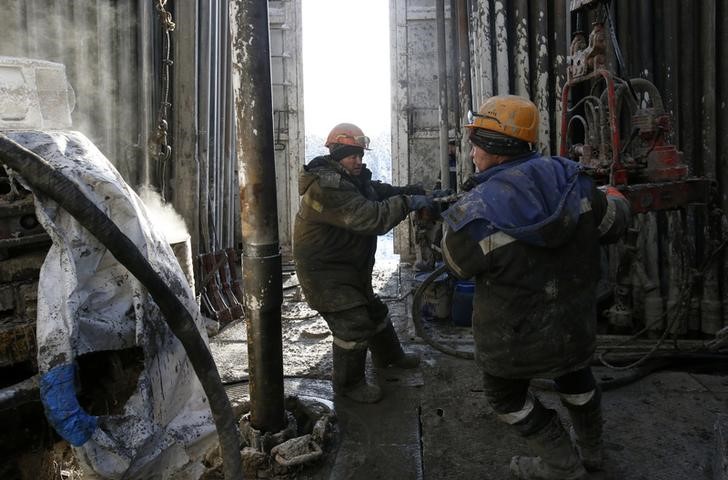By Barani Krishnan
Investing.com - It’s back to parsing the tea leaves for crude traders, as Jerome Powell's vow to support the U.S. economic expansion helped oil prices to their biggest weekly gain since July.
The gains came as back-to-back U.S. stockpile declines and a promised restart of trade talks also faced off with an impending seasonal decline in oil demand amid signs that some in OPEC were overproducing.
But Powell's remarks Friday in Zurich that he saw little chance of a recession any time soon helped send stock prices higher and spread to the oil markets.
New York-traded West Texas Intermediate crude, the U.S. benchmark blend, settled up 22 cents, or 0.4%, at $56.52 per barrel. For the week, it rose 2.6%, its biggest weekly advance since July.
London-traded Brent crude, the international benchmark blend, extended its perch above the key $60 level, rising 52 cents, or 0.9%, to $61.47.
WTI "should be just ‘sitting’ at $55 in my view and probably $59 in Brent,” Scott Shelton, energy futures broker at ICAP in Durham, N.C., said in an email to Investing.com.
“But noise generated by CTA systematic trading and ‘algos-generated pain trades’ is driving the market as it reacts to the macro story, which in my opinion is largely moot for the oil space in the near term, until we can get a better feel for supply growth in 2020.”
Bloomberg reported earlier that analysts at Commerzbank (DE:CBKG) (0|CBKG}}) had cut its Brent crude forecasts by $5 a barrel to an average of $60 through the end of 2020, while UBS said the worsening demand outlook would push it down as far $55.
Since August, crude oil has been whipsawed by volatility, with daily moves of more than 2% being the new normal.
On Thursday, news of a second straight weekly drop in U.S. crude stockpiles and scheduled resumption of U.S.-China trade talks in October sent Brent up more than 2% intraday, extending the previous day’s 4% surge, before the blend settled the day just about flat.
Friday’s early slide came as the market took cognizance of what was seen as the “shoulder season” for demand – the period between late summer and mid-winter when the need for fuel is typically low.
Crude prices also fell as a number of private estimates all pointed to OPEC producers raising their overall output in August, despite signs of faltering global demand.
News agencies Bloomberg and Reuters and price-reporting service Argus all calculated that OPEC’s combined output rose last month, by anything between an average of 80,000 barrels a day and 200,000 barrels a day.
One conspicuous source of overproduction was Iraq, which pumped a new record-high average of 4.88 million barrels a day in August, well above its agreed ceiling under the so-called OPEC+ deal on output restraint.
The estimates stoked latent fears of a new glut forming in world markets, given a steady stream of weaker-than-expected global data, especially from the manufacturing sector.
